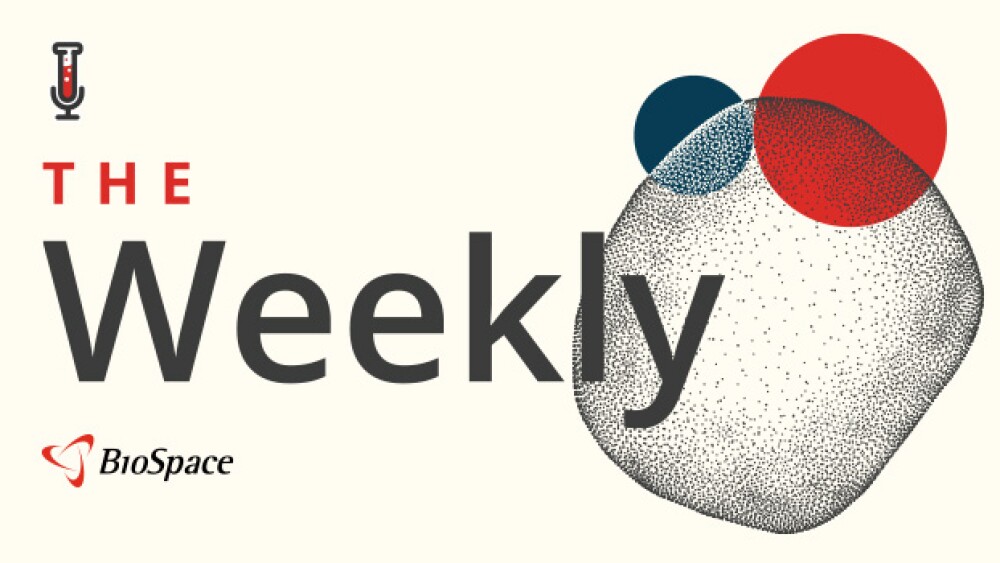Westborough, MA, February 10, 2010 – GenomeQuest today issued its annual summary for 2009. An overall strong performance was led by record revenues across its target markets, continued high satisfaction and renewal rates, and the adoption of its new sequence data management (SDM) platform across major accounts in life sciences.
“In 2009, we saw life science executives seeking to shift from fixed costs to variable costs in order to focus more resources on discovery,” stated CEO Ron Ranauro. “In the software area, they sought and began adopting commercial SDM solutions to support that goal. Our SDM product was very well received, making 2009 an outstanding year for GenomeQuest.”
Company highlights for the year include:
A fourth consecutive year of revenue growth, including record subscription levels and a five-year compound annual growth rate of 48% on subscriptions.
An account base that has grown to include 17 of the top 20 pharmaceutical firms, which are now using GenomeQuest for mission-critical research. And strong product satisfaction within its accounts as evidenced by a 91percent renewal rate, 40 percent growth on renewed subscriptions at major life sciences firms, thirty times more sequences managed, and a 344 percent increase in sequence search activity.
The release of GenomeQuest 6.0, the world’s first commercially available SDM platform, which allows researchers and their organizations to mine, manage, and share their next-generation sequencing (NGS) data.
Significant improvements to the GenomeQuest sequence comparison engine, including high-performance database-to-database comparisons at NGS volumes, multi-algorithm support, a post-comparison querying browser, aggregation of results, and universal support for all popular NGS instruments.
Free, Web-based access to SDM for researchers via a free basic account.
Multiple advances in the GenomeQuest IP sequence search business including a co-marketing agreement with global publisher Thomson-Reuters, weekly automated patent collection and normalization from around the world, web-based querying/reporting of results, and over 670,000 patents now stored in the GQPAT database.
The appointments of industry luminary Mark Boguski, M.D., to the GenomeQuest science advisory board, and market development veteran Anthony Flynn to the position of chief marketing officer.
Alignment of its global sales force to address and service the focused needs of large pharmaceutical and agricultural firms, biotech firms, genome centers, core labs, and academic institutions and researchers.
“As critical as operational excellence is for life science organizations, going forward, we also see the industry committed to and preparing for a larger dynamic – personalized medicine,” said Ranauro. “In 2009, we saw the industry at large make huge progress towards this goal with great advances in lowering the cost of sequencing, improvements in software, and the continued evolution of low-cost, scalable, cloud computing services. At GenomeQuest, we are thrilled to be a part of this expanding ecosystem.”
Ranuaro continued, “It’s also clear that personalized medicine calls for massive, ongoing collaboration. In response, GenomeQuest is delivering and optimizing SDM as a collaborative ‘cloud’ resource – enabling, for example, pharmaceuticals to integrate patient data from global research institutes into their drug-discovery cycle.”
In the coming weeks, GenomeQuest will be scheduling briefings with bioinformatics and IT managers on its upcoming comprehensive API for the GenomeQuest SDM platform and will release the full findings of its NGS survey.
A life science NGS survey conducted by GenomeQuest and Cambridge Healthtech Institute found that over 80 percent of respondents said that NGS would “change the way” they do research and enable them to “make discoveries they could not make before.”
Cowen and Company, in its Life Science Toolkit publication, listed NGS as the fastest-growing segment for sequencing instrument makers and estimated that these devices will increase the informatics demands of research organizations by 2,000 percent over today's levels. It also listed molecular diagnostics as the fastest growing segment of the in vitro diagnostics market, terming testing as “central” to personalized medicine.
PriceWaterHouseCoopers issued a report on personalized medicine, estimating that it will grow to nearly $500 billion in 2015 and terming it a “disruptive innovation” for the life science market. It predicted that collaboration on innovation will become a “core skill” and forecasted collaborative efforts with supporting IT across pharmaceutical firms, biotech, providers, payers, and government. It included the FDA's Critical Path Initiative, and Lilly's collaborative network approach to R&D as helpful examples. It also listed Aetna, Kaiser Permanente, and Geisinger Health System as insurance companies already active in personalized medicine and well into understanding the opportunity to save significant system costs.
Abbott, in its latest financial report, emphasized its advancements in molecular diagnostics. Just recently, the company's high-speed product for detecting and characterizing microorganisms was named the overall Gold winner of the 2009 Wall Street Journal Technology Innovation Awards and a top innovation in 2009 by The Scientist magazine.
AstraZeneca, in its Annual Report, stressed operational efficiency in its corporate initiatives, spoke of “untold opportunity” for the future, and listed personalized medicine and a next generation platform in its top R&D priorities.
GlaxoSmithKline listed “deliver more products of value” in its top corporate priorities. Noting that it takes about 12 years and costs over £500 million to discover and develop a new medicine or vaccine, the company pointed to its external collaborations with other research groups, biotechnology companies, and academic institutions as helping to deliver more medicines of value to patients.
Novartis, which said it leads all pharmaceuticals in U.S. drug approvals from 2000-2009, emphasized the importance of further diversifying its product line and innovating with more differentiated products.
Pfizer reported that one of the great challenges of cancer treatment is “getting the right medicine at the right time to the right patient” and vowed to provide oncology with the best science through a personalized, molecular-based approach to treatment.
Roche reported that it plays a pioneering role in personalized medicine – utilizing molecular biology to gain knowledge on new treatments and uniquely connecting diagnostics with treatments.
Sanofi-aventis reports that it now, as a matter of course, uses collaboration agreements with research organizations and biotechnology companies to strengthen its research and explore new opportunities.
In a November article contributed to CNBC, Paul Stoffels, Company Group Chairman at Johnson & Johnson, wrote that recent advances, including genomics technologies, offer the opportunity for a personalized medicine approach and reviewed a Johnson & Johnson success story in HIV drug development where genomics and collaboration provided critical insight.
Armed with this experience, he went on to call for a “networked approach” to innovation where scientists, regulators, policy makers, and pharmaceutical company leadership work together to share pre-competitive information and common platforms. Stoffels concluded that sharing the benefits and costs of innovation and tapping a wider range of resources will accelerate the realization of individualized patient care.
Life Science Leader, in its most recent issue, argued that the success of personalized medicine relies on the ability of scientists and healthcare providers to capture and share large amounts of data and medical information.
The Innovative Medicines Initiative (IMI), a partnership between the European pharmaceutical industry and the EU, is calling on companies, regulators, governmental institutions, academics to come together to share resources and expertise to address the challenges of drug discovery and development. In November, the group issued a second call for proposals to speed drug development, with over one-third of the topics related to knowledge management and easier sharing of information.
The National Institute of Health (NIH) and the FDA are partnering on tools to mine databases of information about health outcomes to increase drug safety. With a nearly $30 billion budget, the NIH emphasizes in their solicitations that researcher data sharing is expected and promoted by NIH. That policy and an “aggressive insistence” on use of technology tools and methods are generally credited as keys to the success and early delivery of the human genome project.
BGI, China's largest genome center, signed an agreement with the China Development Bank to receive $1.5B in what it calls “collaborative funds” over the next 10 years. The funding will help BGI build research and application platforms for sustainable development in agriculture, bio-energy, personalized healthcare, and related fields.
An alliance between Partners HealthCare Center for Personalized Genetic Medicine, Harvard Medical School and Harvard Business School now offers seven courses and workshops in personalized medicine and held its fifth annual conference on Personalized Medicine in November, entitled “The Time is Now.”
Life Technologies, a global biotechnology tools company lists NGS as a top four growth market and places “personalized medicine” first in the advances of its customers. Also, as detailed in an October new product announcement, the company doubled the data price/performance for large-scale resequencing genomic projects.
Amazon, Microsoft, Hewlett Packard, and IBM all announced cloud offerings and/or significant cloud product enhancements during the year.
About GenomeQuest
GenomeQuest, the leader in sequence data management (SDM), helps genomic researchers and their organizations make great discoveries far faster. Over 160 leading life science companies including 17 of the top 20 pharmaceuticals, use GenomeQuest for mission-critical work.
Using GenomeQuest, organizations improve the performance of their discovery process and broadly prepare for next generation sequencing (NGS). Researchers perform discoveries, manage and share sequence data, and access the world's largest collection of reference databases from a Web browser and personalized dashboard. Bioinformatics managers customize discovery workflows and unify their sequence data environment using the open platform. IT and business managers efficiently scale to broad utilization of next generation sequencing in their discovery operations using the GQ-Engine.
Learn more at www.genomequest.com.




